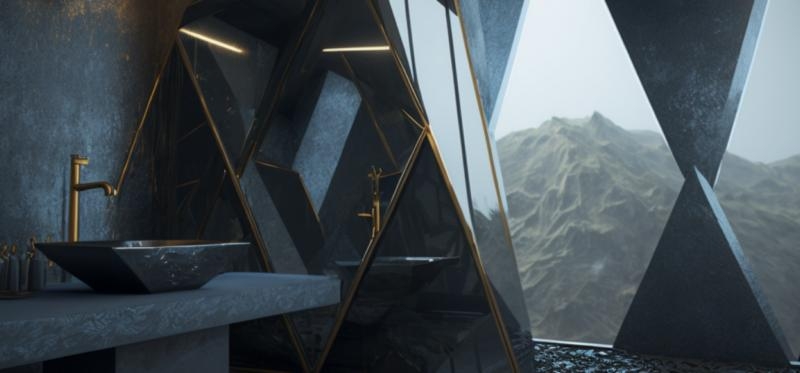Dystopian Design: Exploring Imagined Realities in Architecture

The Inception of Dystopian DesignIn a world where technology advances faster than the speed of our morning coffee, one might think that this evolution of innovation, creativity and the arts would bring about utopian visions of architectural wonder. However, my dear architectural aficionados, you would be gravely mistaken. The truth is, there is a growing fascination with dystopian design in the realm of architecture.
One could argue that this obsession with the dark, the somber, and the downright sinister is a reflection of the chaotic times we live in. It's as if architects, bless their disturbed little souls, are finding catharsis in creating alternative realities that mirror the anxieties of our present world.
Dystopian design is, in essence, the architectural manifestation of existential dread. It's as if architects have decided to climb down from their ivory towers and embrace the complexities and challenges of our imperfect world. Let us take a moment to appreciate the surreal beauty of these imagined realities – a world where the buildings themselves seem to echo our deepest fears and desires.
The Architectural Hallmarks of Dystopia
- Brutalism: Perhaps the most recognizable characteristic of dystopian design is brutalism, that cold and imposing style that seems to hover menacingly over our urban landscapes. Brutalist architecture, marked by its monolithic concrete structures and lack of adornment, is undeniably effective in evoking a sense of dread and unease.
- Deconstructionism: Often associated with the postmodern movement, deconstructionism seeks to dismantle the traditional notions of form, function, and meaning in architecture. By subverting the expected norms, deconstructionist buildings encourage a sense of disorientation and uncertainty – perfect for capturing that dystopian essence.
- Biomimicry: Dystopian design also frequently incorporates elements of biomimicry, taking inspiration from the natural world to create structures that are at once organic and alien. These buildings are often characterized by their unsettling amalgamation of the familiar and the unknown, as they seem to straddle the line between the natural and the artificial.
Examples of Dystopian Design in the Real WorldLet's delve into some real-life examples of dystopian architecture, shall we? (Because who wouldn't want to explore the dark corners of the architectural world in their spare time?)
1. The Barbican Estate, London
As a Londoner myself, it would be remiss of me not to mention the infamous Barbican Estate. This brutalist behemoth, completed in the 1960s, has long been a source of controversy and debate. With its labyrinthine walkways, fortress-like towers, and stark concrete facades, the Barbican has become a symbol of post-war dystopian design – and a love-it-or-hate-it landmark of the city.
2. The Dancing House, Prague
If you're looking for a touch of deconstructionist dystopia, look no further than the Dancing House in Prague. Designed by Frank Gehry and Vlado Milunić, this architectural marvel appears to defy the laws of physics, with its twisted and warped facade seemingly on the verge of collapse. It's a beautiful testament to the chaotic and unpredictable nature of the dystopian imagination.
3. The Eden Project, Cornwall
The Eden Project, a series of massive biomes housing thousands of plant species, may not be your typical dystopian design – but hear me out. With its futuristic, otherworldly appearance, the Eden Project could easily be the setting for a post-apocalyptic tale of humanity's struggle to survive in a hostile, alien environment. Plus, the fact that it's located in Cornwall, a county not typically associated with cutting-edge architecture, only adds to its eerie, out-of-place ambiance.
Embracing the Dark SideWhile it's true that dystopian design may not appeal to everyone's sensibilities, there's no denying the power and intrigue of these architectural wonders. They remind us that the world is not, and never will be, a perfect place – but it's precisely in the exploration of these dark, imagined realities that we can find beauty and meaning, even amidst the chaos.
So, dear architectural enthusiasts, I encourage you to embrace the darker side of design, and to appreciate the strange, unsettling, and awe-inspiring creations that the minds of our most disturbed architects have brought to life. After all, as Aldous Huxley once said, "Maybe this world is another planet's hell."
|
|







